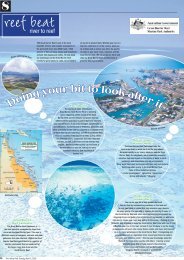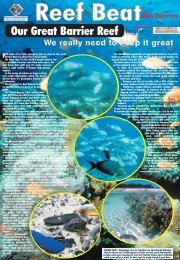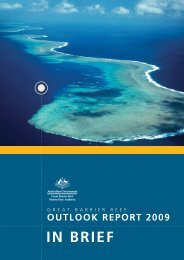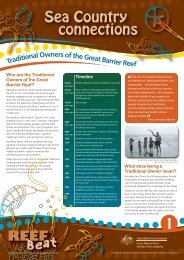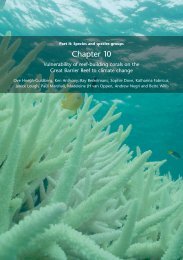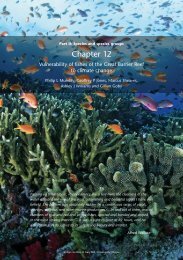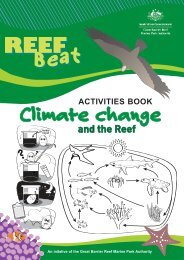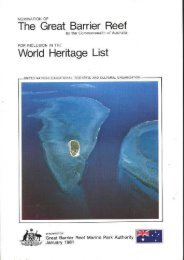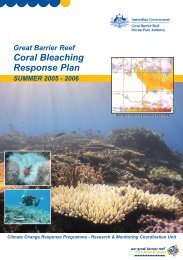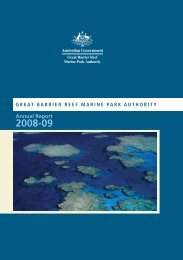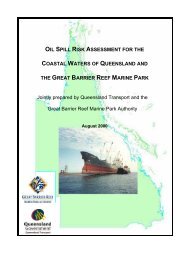Great Barrier Reef Tourism Climate Change Action Strategy 2009 ...
Great Barrier Reef Tourism Climate Change Action Strategy 2009 ...
Great Barrier Reef Tourism Climate Change Action Strategy 2009 ...
You also want an ePaper? Increase the reach of your titles
YUMPU automatically turns print PDFs into web optimized ePapers that Google loves.
Resilience and <strong>Reef</strong> health<br />
The thriving <strong>Great</strong> <strong>Barrier</strong> <strong>Reef</strong> marine tourism industry depends on the health of the <strong>Reef</strong>.<br />
A healthy and resilient reef system has the best chance of coping with stresses and pressures,<br />
such as higher sea temperatures which lead to coral bleaching. A resilient reef is more likely to<br />
bounce back and adapt to change, resulting in more sustainable tourism businesses, especially<br />
those reliant on high quality reefs to market their products.<br />
Before<br />
Complex reef structure<br />
Diverse habitat<br />
Diverse fi sh assemblages<br />
After<br />
Eroded reef structure;<br />
coral rubble<br />
Low diversity habitat;<br />
more macroalgae<br />
Reduced fi sh diversity<br />
and abundance; new species<br />
Figure 5. Transition of a coral reef environment due to climate change. Existing concentrations of greenhouse gases mean<br />
that some change in the <strong>Reef</strong> is inevitable. The extent of change will depend on the rate and severity of climate change<br />
as well as the resilience of the reef ecosystem. Under a worst-case climate scenario, coral reefs will change from high<br />
diversity, complex ecosystems (before) to low diversity systems dominated by seaweeds, herbivorous fi sh, and rubble (after)<br />
(GBRMPA <strong>Climate</strong> <strong>Change</strong> <strong>Action</strong> Plan).<br />
8



